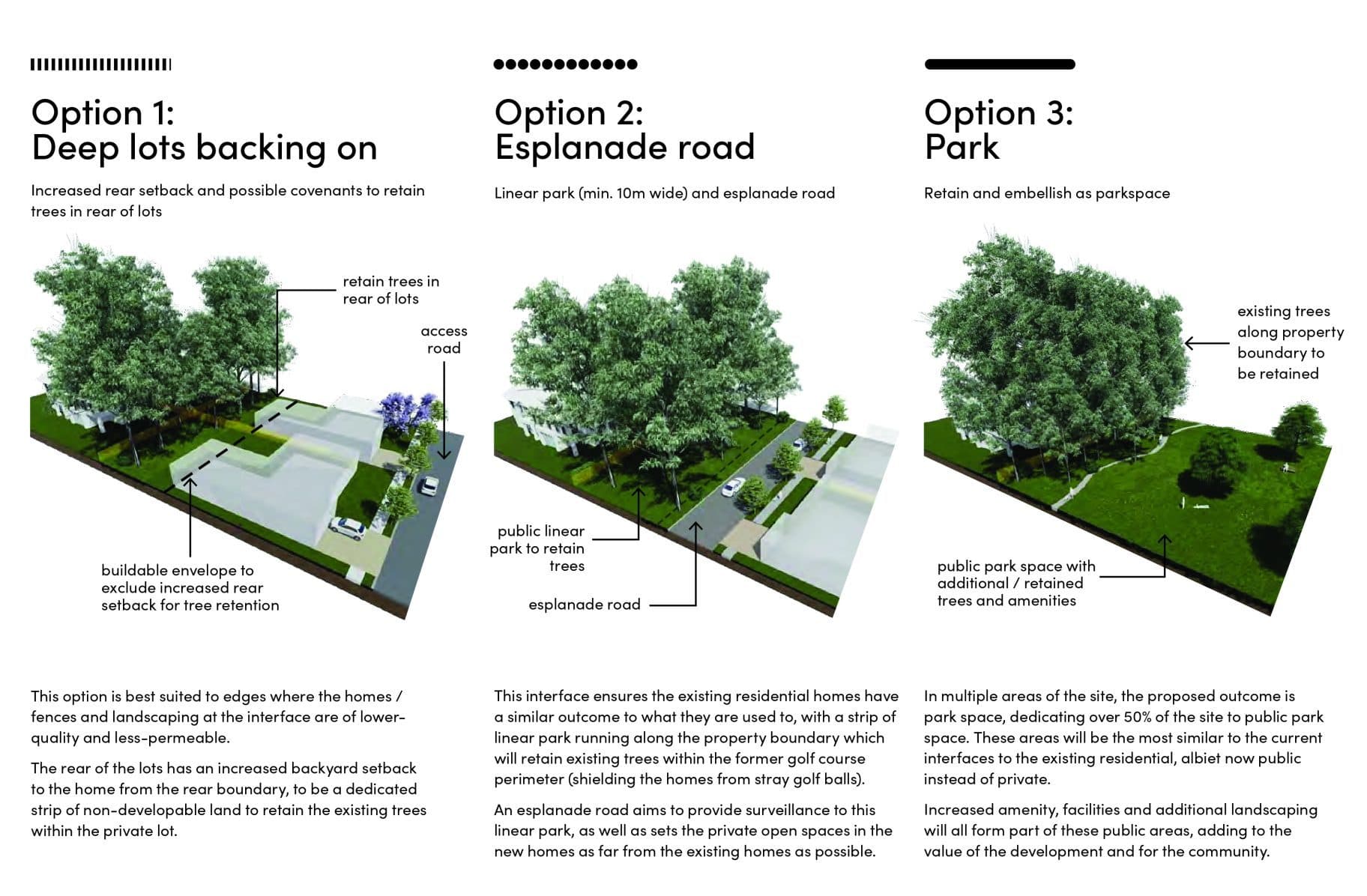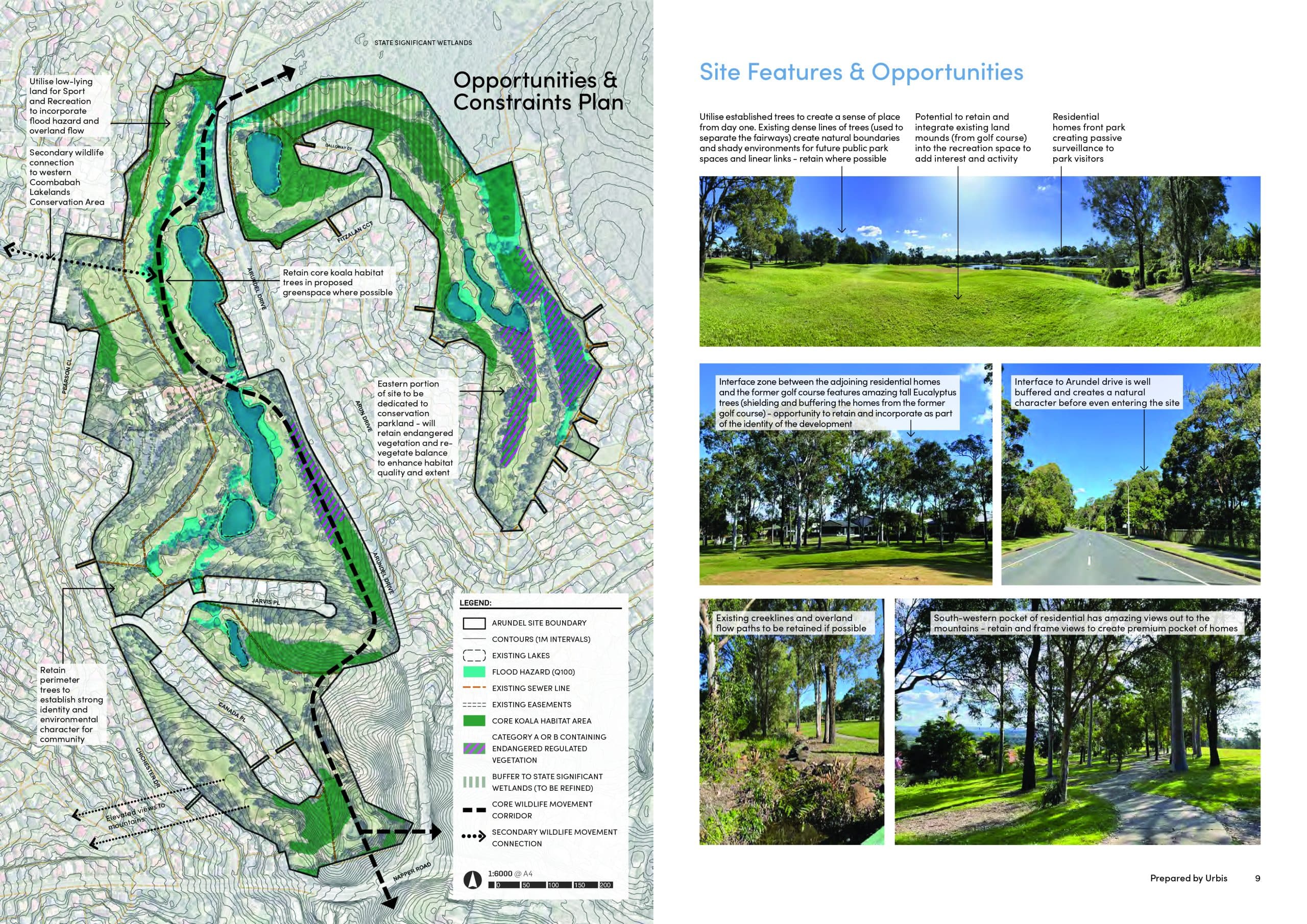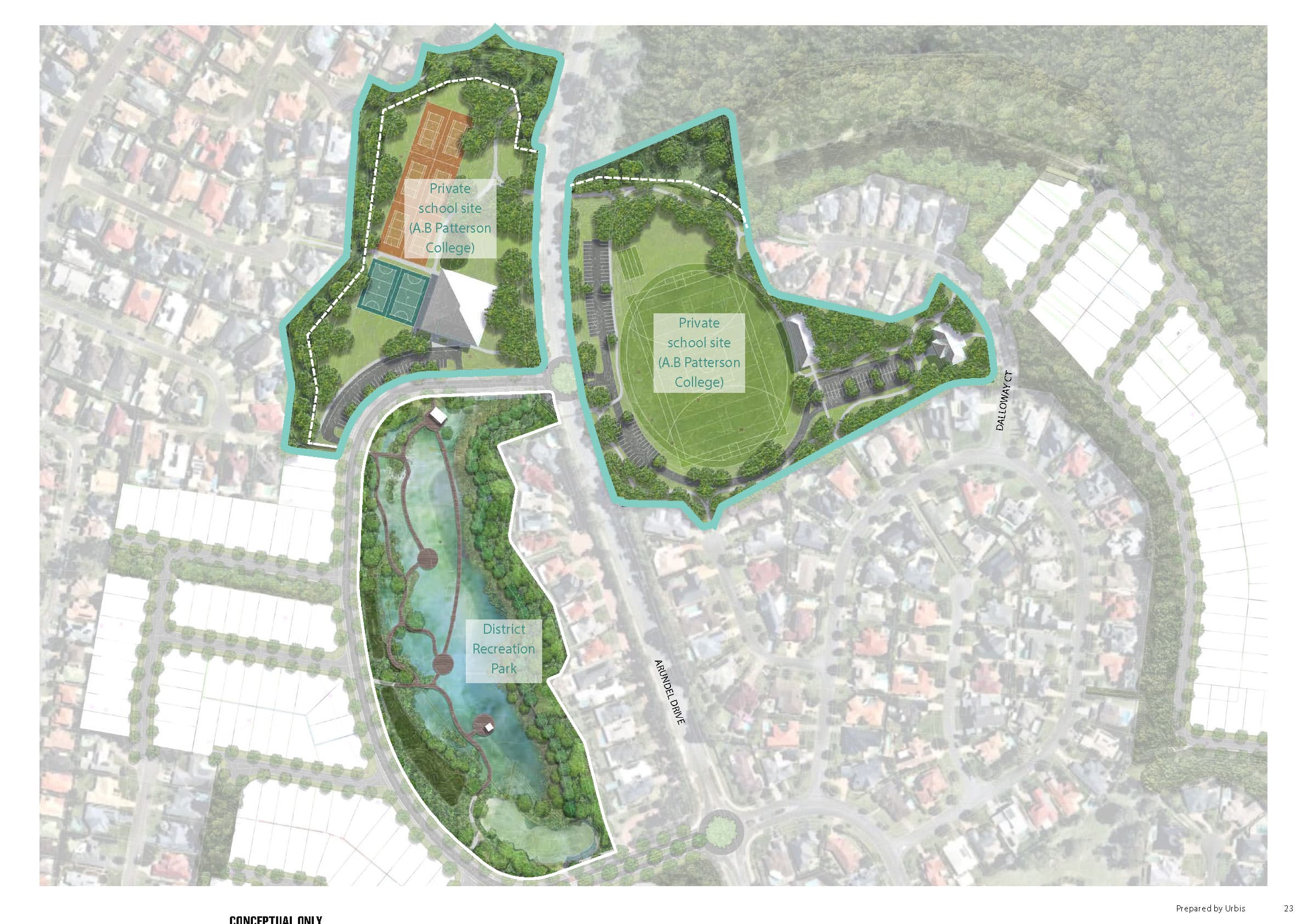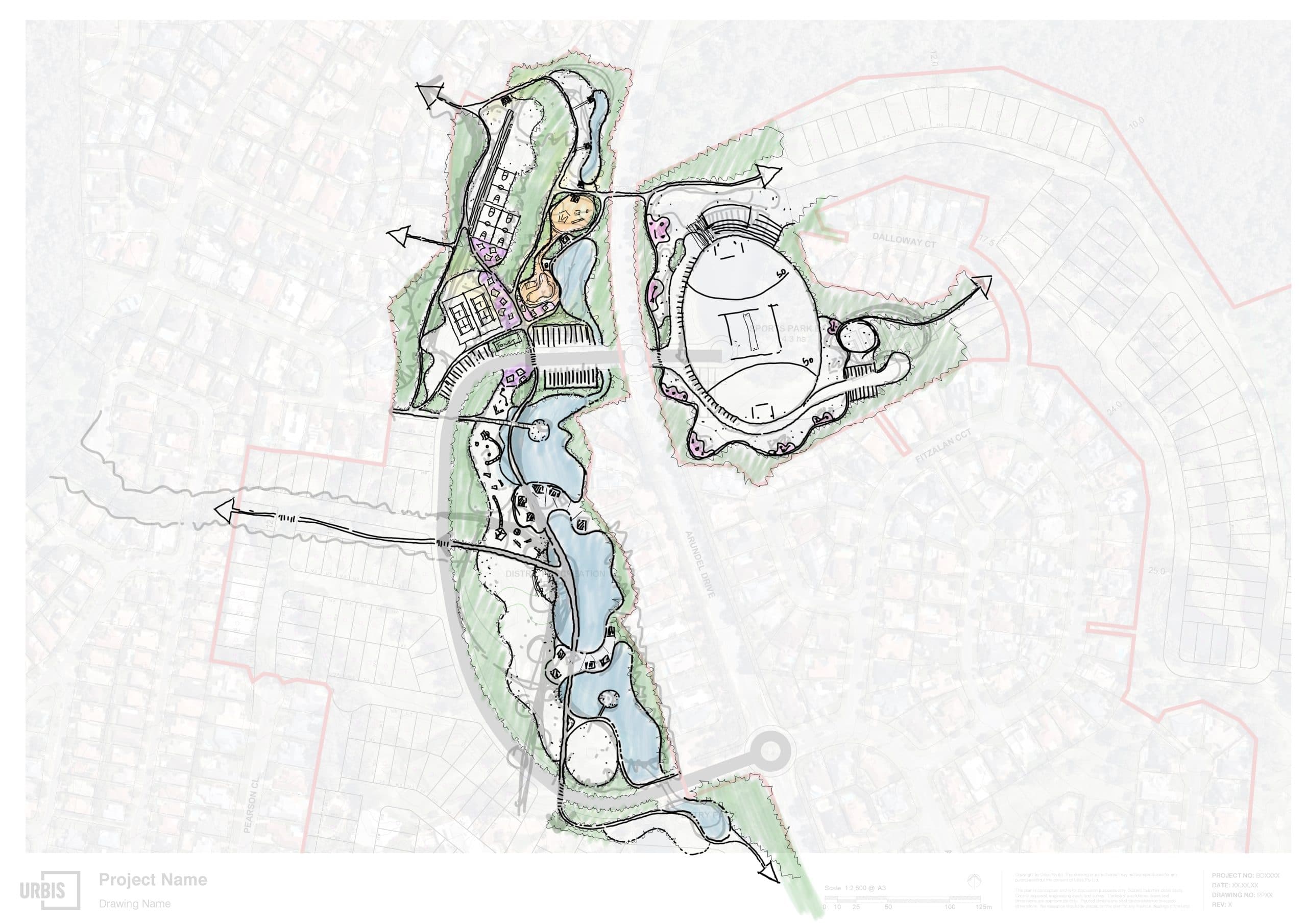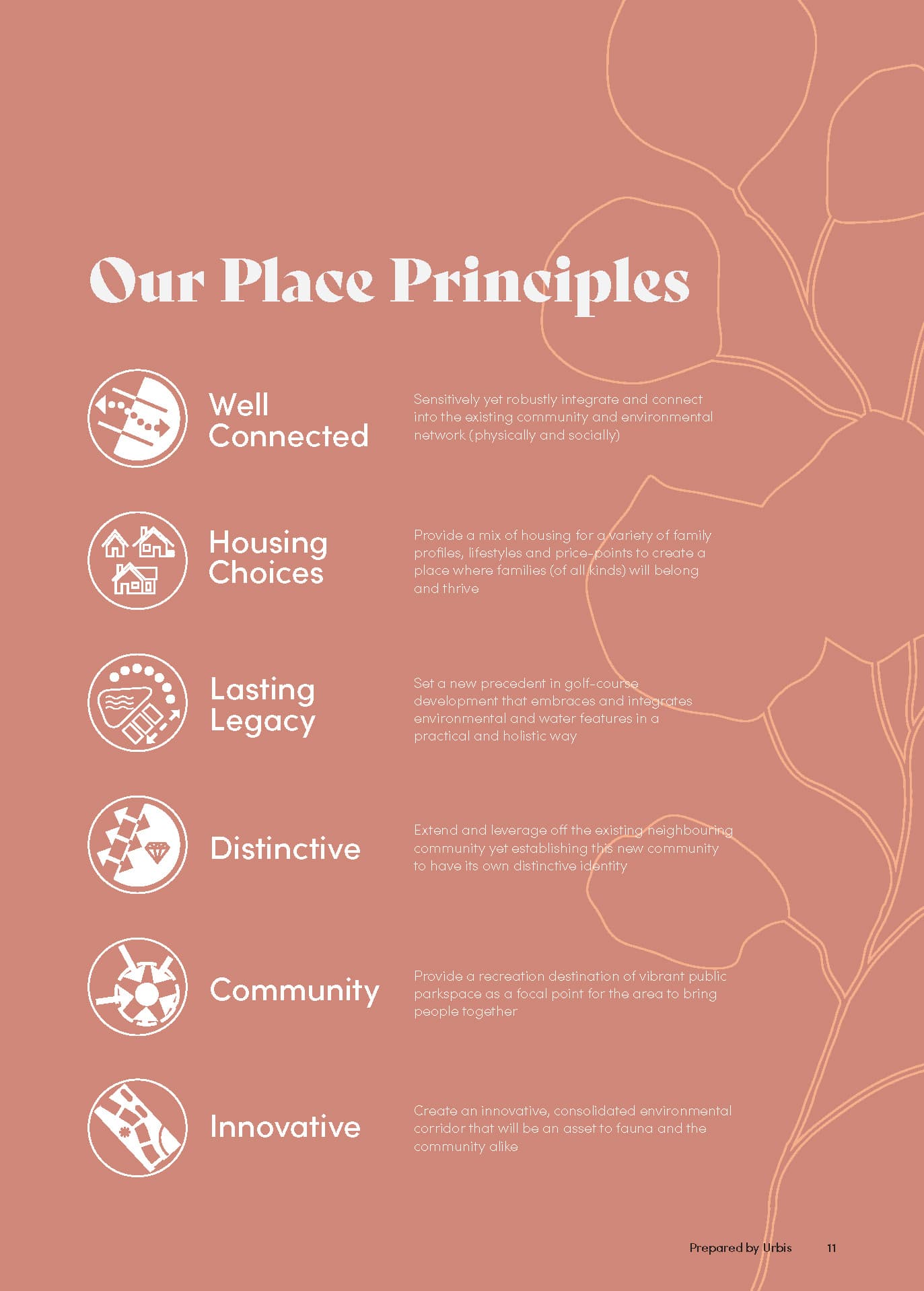
Arundel Hills
Client:
Arundel Estate Developments Pty Ltd
Context
This project will see the 67 hectare Arundel Country Club transformed into an environmentally focused, sensitively integrated new residential community, which will set a new benchmark in how golf courses are re-developed.
The existing privatised golf course will change to a mix of residential, sport, park and conservation. A destination recreation park space will unlock the site for public enjoyment (for both the existing and future community), as well as the creation of residential homes for approximately 1200 people.
Urbis led the town planning, urban design and landscape architecture for the project, with our Property & Economics team performing a needs assessment for the golf course to test the viability of transitioning to residential.
With the site currently being an 18-hole golf course, there are many unique and dramatic features that we have taken advantage of: intense corridors of eucalyptus trees framing the fairways, undulating grassy mounds plus the amazing water bodies.
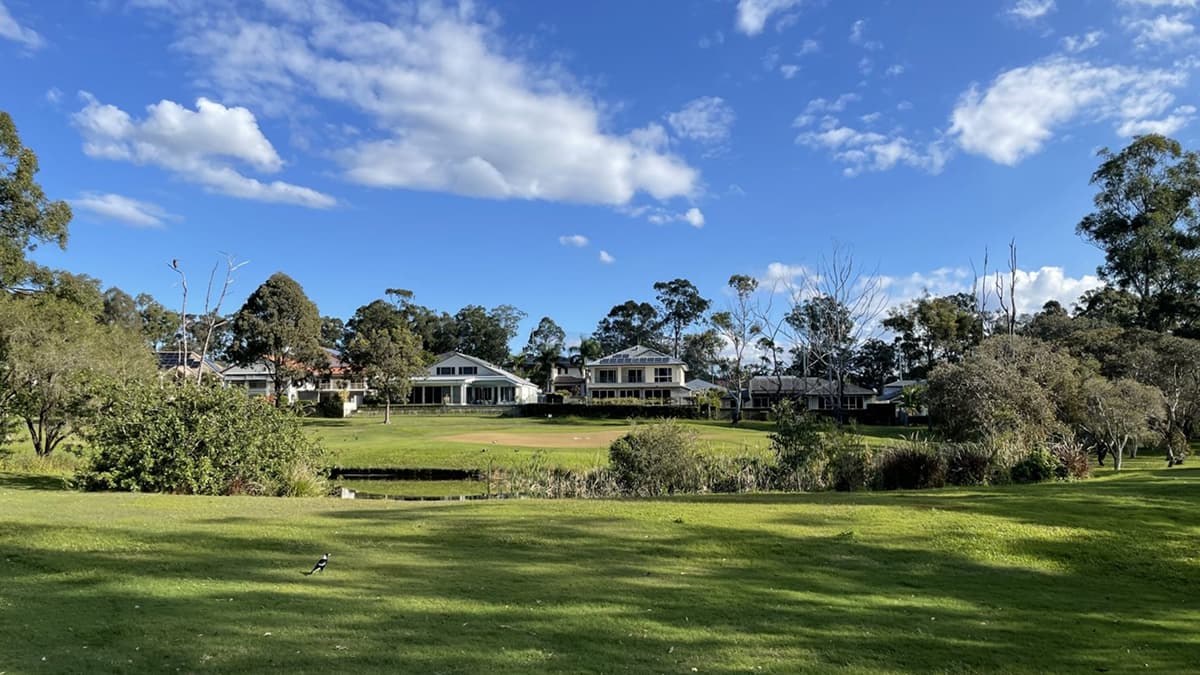
The vision for the project
Envisioned to embrace and restore its natural ecosystems, Arundel Hills will offer a meandering landscape that connects its community to nature and encourages health and wellbeing. Responsive, considerate, and sympathetic, it will return park space to the community and provide a safe green network for both fauna and for people. An enclave of contemporary homes, framed by tall trees and established neighbourhoods, Arundel Hills will bring a relaxed, calming lifestyle for its residents to thrive.
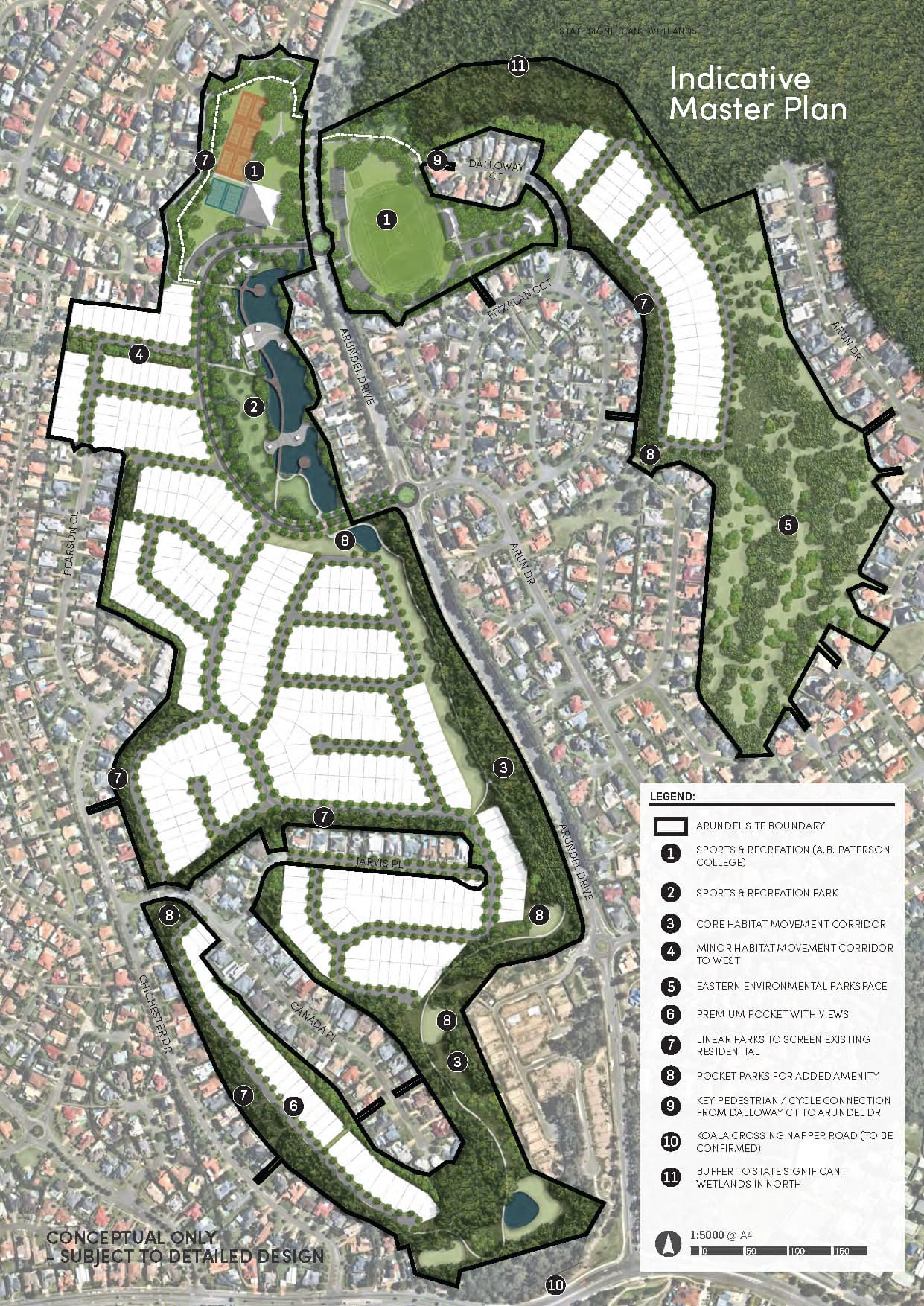
Environmental focus
One of the key elements of the site is the existing vegetation, which currently facilitates key movement corridors for koalas and kangaroos. The koalas have been tracked, and their preferred links have been retained and enhanced through the design of the master plan, to ensure their safe passage through the site. The majority of the eastern parcel of land has been dedicated to conservation park space to contribute to the Hinterland to Coast Critical Corridor.
It’s not every day we get to work on a project with limited earth working required, which makes it possible to retain as many trees as we can.
“ The master plan and landscape design aim to take advantage of this and to do the environmental features justice by dedicating over 54% of the site to green space (conservation, parks, recreation, wetlands and public open space) – a significant commitment to the environment and to the community.
Edges
Infill sites are always complicated, but a site that is framed by homes that leverage the site itself as their amenity – now that’s a challenge.
To address these edges, we have walked the site and mapped each edge and its appearance. Using these as a guide, 3 typical treatments have been developed and appropriately applied within the master plan to ensure the best outcomes for each interface are proposed.
Proposing larger setbacks to homes and green links along edges was one of the key drivers for the master plan; not just to limit the impact on the adjoining community, but also to retain as many existing trees as possible – and the edges are already buffered heavily and are perfect for protection.
